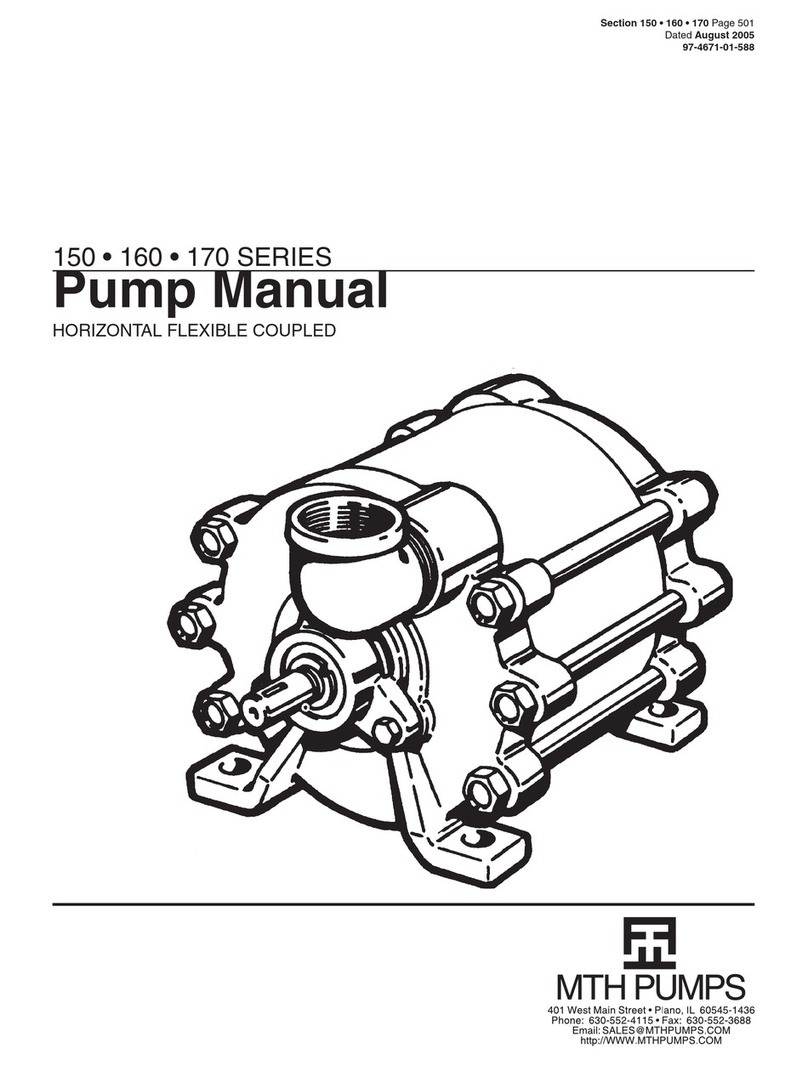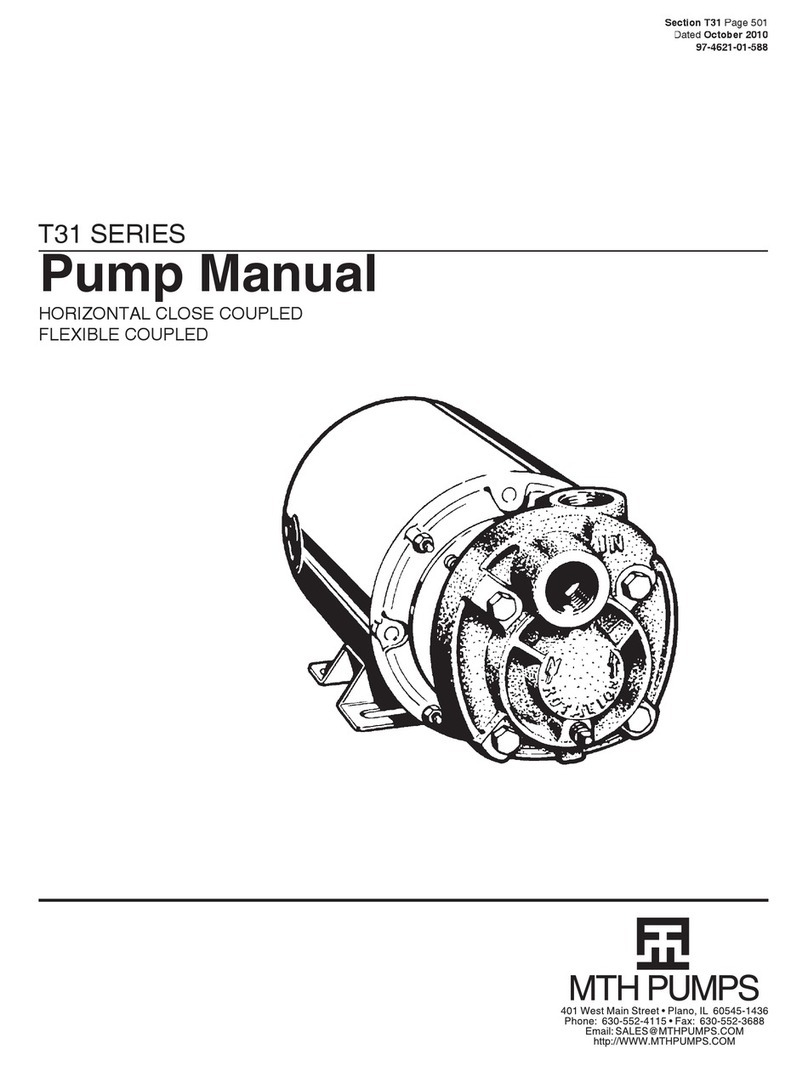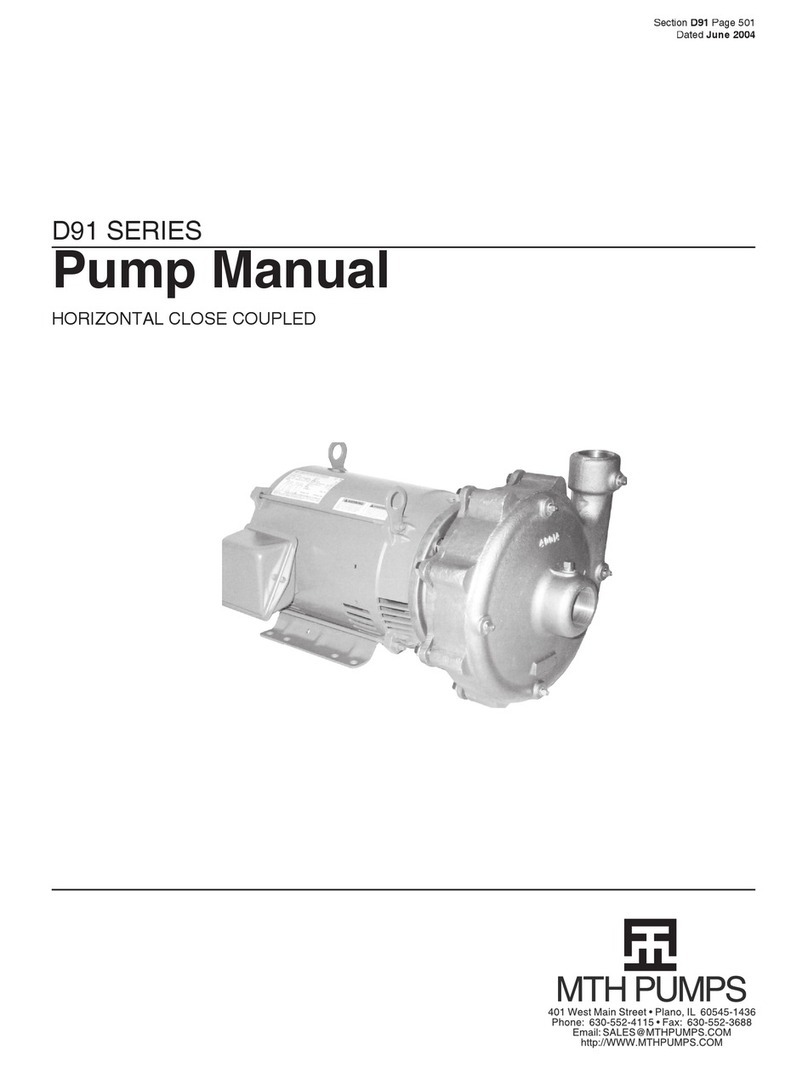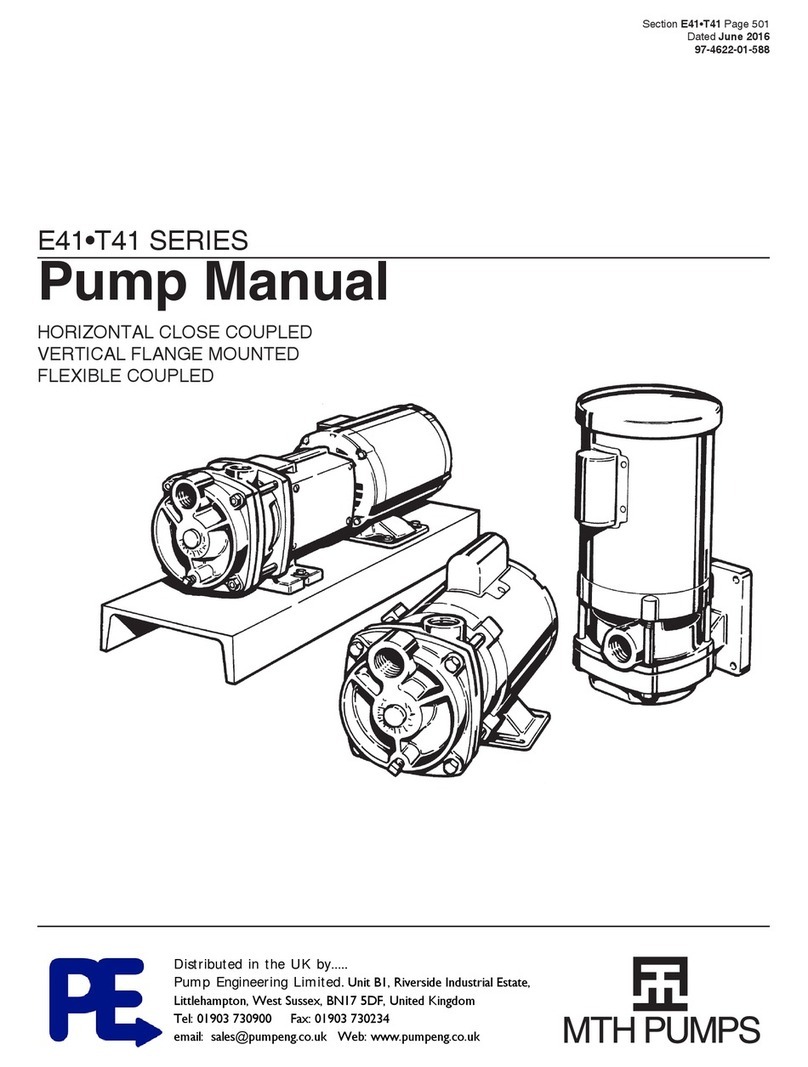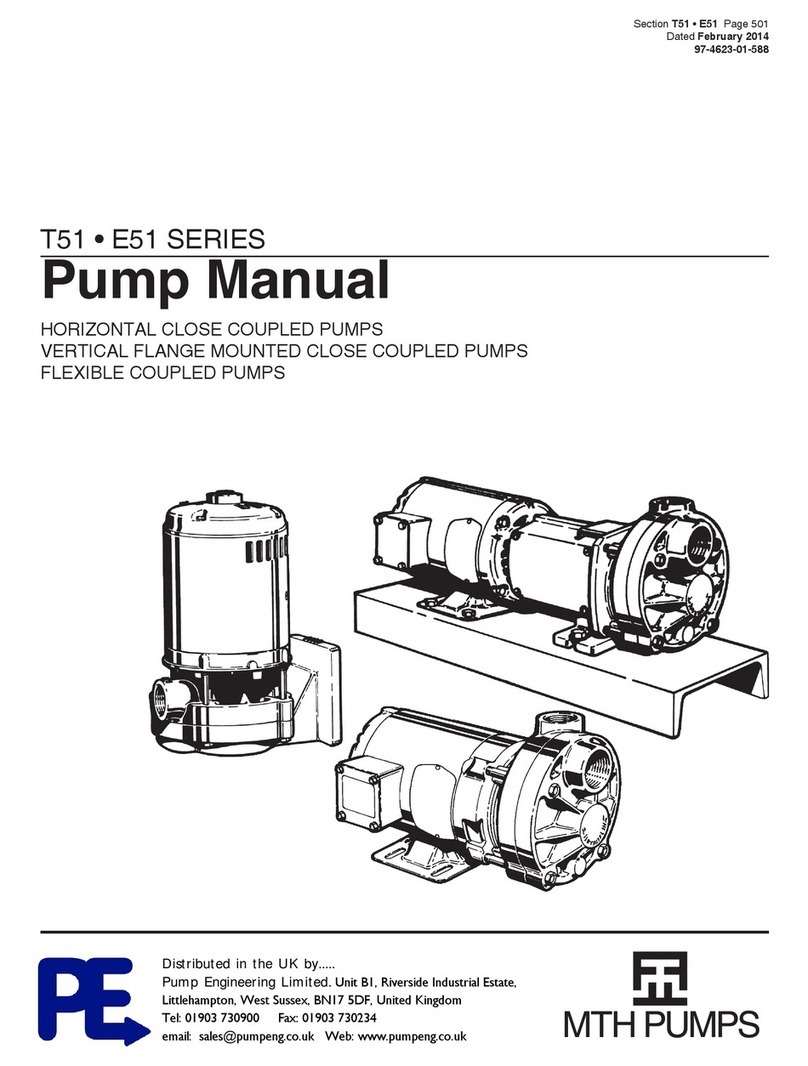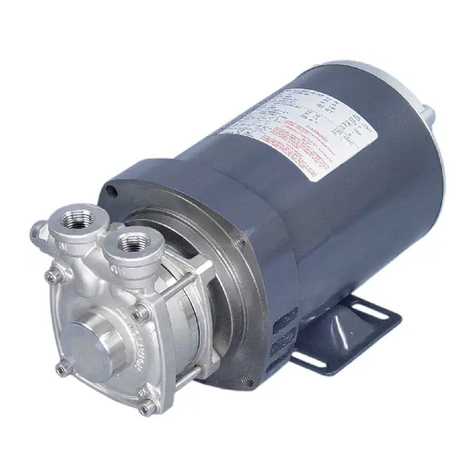
C41 • C51 • C61 SERIES
General Instructions
CENTRIFUGAL PUMPS
A. Inspection of Equipment
B. Storage
C. Placing Stored Pumps Into
Service
D. Recommended Spare
Parts
When properly installed and given
reasonable care and maintenance,
centrifugal pumps should operate
satisfactorily for many years. The
C Series pumps use tight running
clearances to build pressure.
Abrasive particles in high enough
concentrations, can eventually open
up the close clearances between
the impeller and the casing, thus
reducing pressure output. To avoid
this, careful selection and use of a
low resistance suction strainer should
be considered. For critical services
it is recommended that you keep an
identical pump for stand-by use.
1A Inspection of Equipment
Immediately upon receipt of the
shipment, inspect the equipment for
damage or missing components.
Check the shipping manifest and
report any damage or shortage to
the Transportation Company’s local
agent. Inspect the crate and any
wrapping material before discarding.
Parts or accessories are sometimes
wrapped individually or fastened to
the skid.
Put the instructions that came with
the shipment in a safe place where
they will be available to those who
will be using them for installation and
service.
1B Storage
If the pump is to be stored before
use, it should be inspected as
described in 1A, recrated and
stored in a dry location. Standard
shipping containers are not suitable
for outdoor storage. In some areas,
it may be necessary to cover the
pump’s exterior surface with oil or
other rust inhibiting coating. All units
are tested at the factory with a water/
corrosion inhibitor solution, some of
which will remain inside the pump
upon receipt. If units are ushed out
prior to storage, this inhibitor will be
removed and proper care must be
taken to prevent product deterioration
from improper storage.
For storage beyond 30 days, a
corrosion inhibiting protective uid
should be added to the internal pump
cavities. Fluids used in the pump
should be selected for compatibility
with pump materials. This is very
important when optional seal and
gasket materials have been used.
Protective caps on the inlet and
outlets should also be used. Caps
alone are not sufcient protection.
1C Application Considerations
1C1 Electrical Wiring
All electrical equipment and wiring
should conform to Local and
National Electrical Codes. Use the
motor manufacturer’s instructions
for connecting the motor. Note the
correct rotation and wiring diagrams
on the assembly. Make sure the
motor rotation and speed matches
that required for the pump. When
making electrical connections to
motors provided with threaded
stud electrical terminals, the
recommended torque should be
13-16 inch-lbs. Applying torque in
excess of this range may cause
damage.
1C2 Construction Materials
While it is reasonable to assume
that good judgement has been used
in selecting all the materials in the
pump for compatibility with process
uids, actual conditions sometimes
vary from original expectations. Also,
typical material selection charts do
not consider all the temperature,
pressure, and uid variables. The
customer’s engineer should be
consulted for nal judgment on the
best materials for critical process
applications.
1C3 Valves
If a shutoff valve is necessary in the
suction line, use a gate, ball, buttery,
or other full port valve. Globe or
other ow restricting valves, can in
some cases, reduce pump ow or
increase chances of cavitation.
A swing check valve in the suction
line is recommended even when
the pump inlet is only slightly higher
than the uid source to aid in
priming. It should be the same size
as the pump inlet or sized based on
reasonable uid friction losses.
A foot valve is recommended when
lifting uid from a sump. This will
save wear and tear on any pump,
even those equipped with self
priming equipment.
A low resistance Suction Strainer is
recommended immediately ahead of
the pump on any newly constructed
system. This is advisable due to the
probability that foreign material large
enough to damage pump clearances
may remain, even though the piping
has been ushed.
Valves in the outlet piping of a
centrifugal pump should be closed,
or nearly closed, when the pump is
started. This will reduce the start-up
load on the pump and motor. Never
start the pump with the discharge
valve fully open, unless system
friction losses are substantial enough
to prevent the pump from operating
at “run out,” otherwise cavitation or
motor overload may occur.
Inlet valving should be fully open
when starting any pumping system.
Without some uid in the pump at
startup, the unit can gall and lock up
the impeller. Always ll the pump
and vent it of air for best pump life.
Violent pump failure will result from
continued operation with the inlet
valve closed.
1C4 NPSH (Net Positive Suction
Head)
The NPSH required varies with
every size and capacity of pump.
The NPSH required by your unit can
be obtained from the performance
curves or from your MTH
representative.
If the NPSH available is not equal
to or greater than that required by
the pump, it must be increased or a
different pump selected. The usual
method for increasing NPSH is to
raise the static head on the pump
1.
Section C Page 502
Dated March 2017
